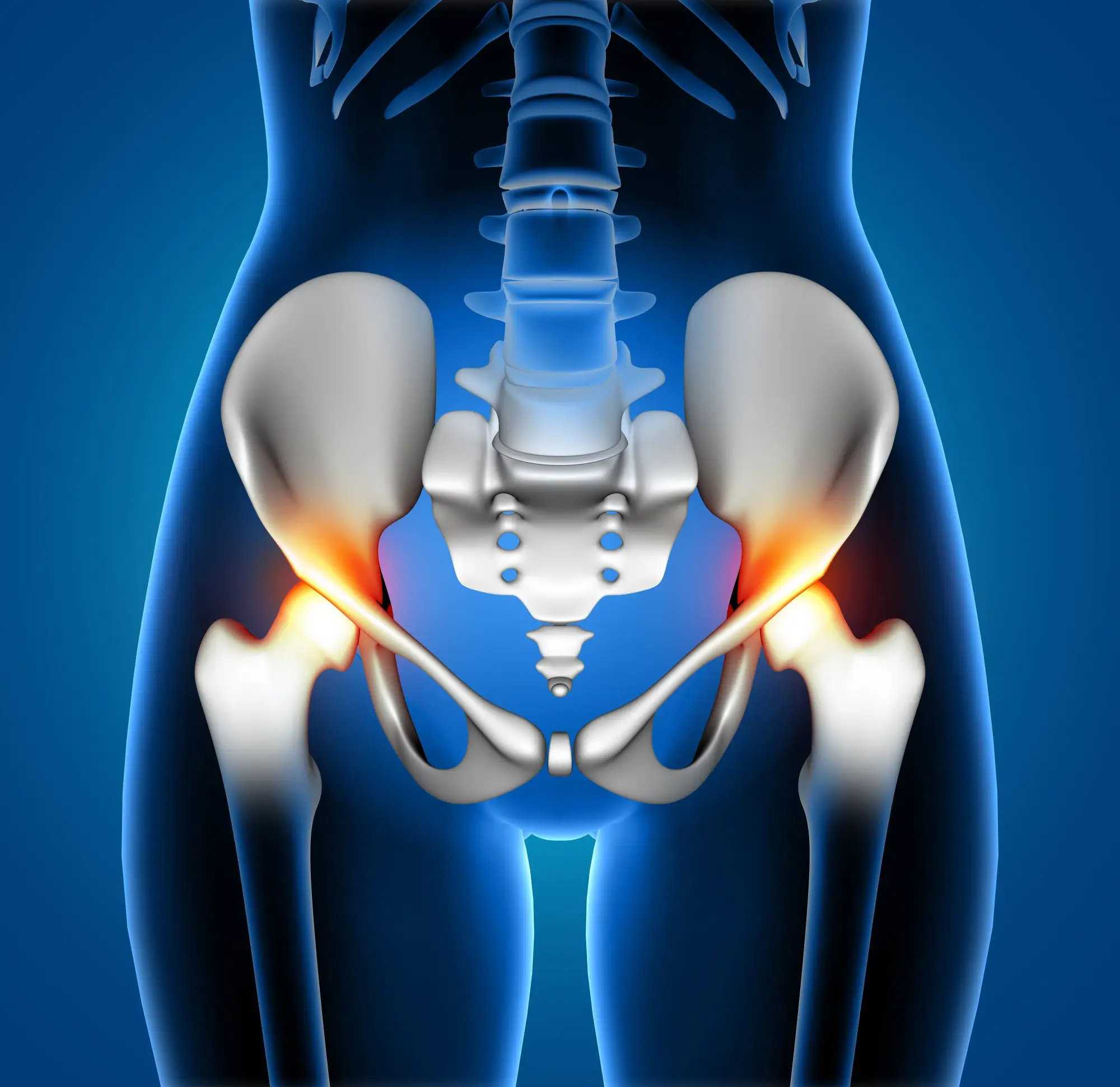Why Should You Consider Hip Replacement in Mexico? A Comprehensive Guide

If chronic hip pain is limiting your mobility and everyday tasks have become a struggle, you might be considering hip replacement surgery. However, the high cost and long waiting periods in the U.S. can make this solution seem out of reach.
In contrast, hip replacement in Mexico offers a more affordable option without compromising on quality. With experienced surgeons, advanced medical facilities, and a fraction of the cost, Mexico is becoming a top destination for people looking for effective solutions to regain mobility and ease their pain.
In this blog, we’ll cover about hip replacement costs and procedure details in Mexico. Let’s dive in!
What is hip replacement surgery?
The hip joint works like a ball-and-socket, where the ball at the top of your thigh bone fits into the socket of your pelvis. With age or due to conditions like arthritis or an injury, this joint can become damaged, leading to pain and stiffness.
If physical therapy or medication doesn’t provide relief, hip replacement surgery, also known as hip arthroplasty, could help. In this process, the surgeon replaces the damaged or worn-out parts of your hip joint with artificial prosthetics, usually made of plastic, metal, or ceramic. The goal is to help you reduce pain and restore movement, so you can perform daily tasks easily.
Why you might need a hip replacement?
You might need a hip replacement if you’re dealing with conditions that severely damage your hip joint. Some common reasons include:
-
Hip fracture
-
Hip dysplasia (a birth defect where the hip joint doesn’t form correctly)
-
Osteoarthritis (wear and tear of the cartilage)
-
Osteonecrosis or avascular necrosis (death of bone tissue due to poor blood supply)
-
Rheumatoid arthritis (an autoimmune condition that causes swelling and joint damage)
-
Posttraumatic arthritis (arthritis that develops after a hip injury)
Who is a good candidate for hip replacement surgery?
A hip replacement might be the right choice for you if:
-
You experience severe hip pain that makes it hard to do everyday activities like walking or going upstairs.
-
Your pain doesn’t get better with medications, physical therapy, or other treatments.
-
Stiffness or discomfort prevents you from doing basic tasks.
-
You’re generally healthy enough to handle surgery and recovery.
-
Non-surgical treatments haven’t helped, and you still deal with chronic pain or limited movement.
Who should avoid hip replacement surgery?
A hip replacement might not be suitable for people who:
-
Have infections that could interfere with the healing process.
-
Smoke, as it can slow down healing and increase the chance of complications.
-
Have severe osteoporosis, which can weaken bones and affect the outcome of surgery.
-
Have chronic diseases, like uncontrolled diabetes or heart issues, that raise the risks during surgery.
-
Are extremely obese (BMI over 40), which can affect recovery and the longevity of the implant.
-
Have had a heart attack or stroke, as these conditions can raise surgery risks.
-
Have had cancer, particularly if it affects the bones or healing process.
-
Have unrealistic expectations about the surgery results.
Be sure to discuss your health with your doctor to help determine if hip replacement is the right option for you
Benefits of hip replacement
Hip replacement surgery offers many benefits, including:
-
Relieves persistent hip pain, making everyday tasks easier and more comfortable.
-
Restores mobility, helping you walk, bend, and move without restrictions.
-
Strengthens the hip joint, improving functionality and physical performance.
-
Lowers the chances of falls and additional muscle or joint damage.
-
Boosts mental well-being by alleviating pain and improving independence.
-
Enhances quality of life by allowing you to return to activities you enjoy.
-
Delivers high success rates, with most patients reporting significant improvement.
-
Offers durable results, with implants lasting 15 to 20 years or more.
Why consider hip replacement in Mexico?
An increasing number of people are choosing Mexico for hip replacement surgery. In fact, a report by GlobalData shows that about 16,396 hip replacements were done in Mexico in 2022. Here are some top reasons why people consider hip replacement in Mexico:
Affordable healthcare
One of the main reasons people choose hip replacement in Mexico is the significant cost savings. In the U.S., the procedure can cost tens of thousands of dollars, while in Mexico, you can expect to pay 40-70% less for the same high-quality surgery. This makes it a more affordable option for many seeking relief from hip pain.
High-quality medical care
Mexico is home to world-class hospitals and highly trained surgeons who are experienced in performing hip replacements. Many doctors have trained in the U.S. or Europe and follow the same standards of care. You'll find state-of-the-art medical facilities that offer advanced technology, ensuring you receive top-notch care throughout the process.
Convenient location
With easy access to major U.S. cities, Mexico is a convenient option for those seeking medical care abroad. Flights are often inexpensive, and many hospitals offer transportation services to make your trip seamless.
Shorter waiting times
In many countries like the U.S., waiting for a hip replacement surgery can take months or even longer due to long waiting lists. In Mexico, however, the waiting times are much shorter, allowing you to schedule surgery and begin your recovery without unnecessary delays
Recovery in a relaxing environment
Mexico also offers the chance to recover in a more relaxed and scenic setting. Many hospitals are located in tourist-friendly areas, allowing you to recover while enjoying a stress-free environment, helping to speed up the healing process.
Ready to take the next step toward pain relief? Contact QCG today to learn more about hip replacement options in Mexico!
Types of hip replacement surgeries in Mexico
There are different types of hip arthroplasties performed in Mexico depending in the bone health and patients' condition. Let’s take a look at them::
Total hip replacement (THR)
This involves replacing both the femoral head (the ball) and the acetabulum (the socket) with artificial parts. It’s the most common type of hip replacement.
It’s best for:
-
People with severe osteoarthritis or rheumatoid arthritis
-
Those with major joint damage from injury
-
Anyone experiencing chronic pain that affects daily activities
Total hip replacement has a high success rate, with over 90% of patients reporting significant pain relief and better mobility after surgery.
Partial hip replacement (Hemiarthroplasty)
In this surgery, only the ball of the hip (femoral head) is replaced, while the socket stays in place. It's often done for specific hip fractures.
It's a good choice for:
-
Older adults with a broken femur neck
-
People who can't have a full hip replacement because of other health issues
Since it's less invasive, recovery is faster and easier, making it a better option for those who can't handle a full surgery.
Hip resurfacing
This involves capping the femoral head with a metal covering instead of removing it. The socket is also replaced with a metal shell.
Best for:
-
Younger, active patients with early-stage arthritis
-
Those with good bone quality who want to preserve more of their natural bone
Hip resurfacing preserves more natural bone than a full replacement and may allow for more natural movement, especially helpful for younger patients who might need a revision later in life.
Bilateral hip replacement
This surgery involves replacing both hips in one procedure.
It is ideal for:
-
Individuals with severe arthritis or damage in both hips
-
Those who are healthy enough to handle surgery on both hips at the same time
Having both hips replaced at the same time can reduce recovery time compared to separate surgeries and may improve overall movement and balance.
Robotic hip replacement
This advanced technique uses robots to help the surgeon perform the procedure with greater precision.
Best for:
-
People looking for minimally invasive options
-
Patients with complex anatomy that requires precise alignment
Robotic-assisted surgery offers smaller incisions, faster recovery, and more accurate placement of the implant.
Revision hip replacement surgery
This surgery is done when an existing hip implant fails or wears out. It replaces one or both parts of the original implant.
Ideal for:
-
People experiencing pain or problems with a previous hip replacement
-
Those whose implants have worn out
Revision surgeries can restore function and reduce pain, with high success rates depending on the individual case.
How much does a hip replacement cost in Mexico?
The hip replacement in Mexico is much more affordable compared to the U.S. On average, the procedure costs $13,500, depending on the hospital and location. In contrast, in the U.S., the same surgery can range from $31,000 to $44,000, while in Canada, it’s around $28,000.
Here’s a detailed comparison of the average hip replacement cost for different types of procedures in Mexico versus the U.S.:
| Procedure Type | Cost in Mexico (USD) | Cost in the U.S. (USD) |
|---|---|---|
| Total hip replacement (THR) | $7,000 - $10,000 | $31,000 - $44,000 |
| Partial hip replacement (PHR) | $4,500 - $7,500 | $30,000 - $50,000 |
| Hip resurfacing | $8,000 - $15,000 | $30,000 - $50,000 |
| Revision hip replacement | $10,000 - $12,000 | $30,000 - $50,000 |
| Robotic-assisted hip replacement | $12,000 - $18,000 | $30,000 - $100,000 |
| Bilateral total hip replacement | $29,000 | $62,000 |
As you can see, the savings are substantial. By opting for surgery in Mexico, you can save up to 80% on a unilateral total hip replacement compared to U.S. prices. Even other procedures like hip resurfacing and revision surgeries come with significant savings, making Mexico a cost-effective option for those seeking quality treatment.
Why is a hip replacement in Mexico more affordable?
Hip replacement surgery in Mexico costs less due to several key factors that help keep prices affordable without compromising on quality. Here's why:
-
Hospital charges are lower in Mexico, including operating room fees and facility costs.
-
Billing practices are more flexible, often offering transparent pricing with no hidden costs.
-
Location-based expenses, such as rent and utilities, are lower in Mexico compared to the U.S.
-
Hip implant prices are lower because of local suppliers and reduced manufacturing costs.
-
Malpractice insurance is less expensive, which helps keep surgery costs down.
-
Hospital services after surgery are included at lower rates, offering quality post-operative care without the high price.
-
Lower labor costs for skilled surgeons and medical staff help reduce the overall cost of the procedure.
-
Cost of living in Mexico is generally lower, which affects the overall price of healthcare services, making them more affordable.
Looking for affordable, high-quality hip replacement surgery? QCG connects you with top Mexican surgeons and hospitals – contact us now!
What to expect during a hip replacement in Mexico
If you're planning hip replacement surgery in Mexico, here's what to expect during the process:
Planning your trip
Before you start your medical travel, here are some steps to consider:
-
Start by researching and selecting a trusted hospital or clinic with a good reputation for orthopedic care. Check the surgeon’s credentials and read reviews from other patients.
-
Book your flights and accommodations. Consider medical tourism packages that include surgery, lodging, and transportation.
-
Schedule a consultation with your surgeon to see if you’re a good fit for hip replacement and to decide which type is right for you.
-
Gather all your medical documents, including health records, imaging tests (X-rays or MRIs), and prescriptions.
-
Consult with your doctor to confirm you’re fit for travel and surgery.
Pre-operative preparations
When you arrive in Mexico, here’s what happens before your surgery:
-
Your surgeon will look at your medical history. They will also check your hip's strength, alignment, and range of motion through physical examination.
-
You’ll have X-rays or MRIs to assess the damage to your hip joint
-
You’ll undergo blood tests, an EKG, and chest X-rays to make sure you’re ready for surgery.
-
You will meet the anesthesiologist to discuss whether you’ll have general anesthesia (which puts you to sleep) or regional anesthesia (which numbs the lower body).
-
The medical team will explain the procedure, potential risks, and recovery expectations.
Step-by-step hip replacement surgery process
Generally, the surgery lasts between 1 and 2 hours, depending on its complexity. During the procedure:
-
You’ll receive anesthesia to make sure you don’t feel any pain and stay comfortable throughout the operation.
-
The surgeon will make an incision near the hip joint, choosing the best spot based on the type of surgery.
-
Damaged bone and cartilage will be removed carefully, keeping the healthy tissue intact.
-
The new artificial components, such as a metal or ceramic ball and socket, will be placed into the joint.
-
Once the implants are safely in place, the surgeon will close the incision with stitches or staples.
-
After the surgery, you'll be moved to a recovery area where the medical staff will keep an eye on you as you wake up from anesthesia.
Considering hip replacement in Mexico? Let QCG guide you through every step of your journey – from consultation to recovery!
Recovery time after hip replacement
Recovery from a hip replacement surgery varies depending on the type of procedure. However, most people stay in the hospital for 2 to 5 days for monitoring and initial recovery. Physical therapy starts soon after surgery, and you’ll use a walker or crutches to help with walking.
Expect pain and swelling in the first few weeks, but pain management options will be available. Your doctor will provide pain relief with medication and treatments. You may need help with daily tasks. Physical therapy will continue to improve strength and mobility, and you’ll gradually regain movement and flexibility.
Within 6 weeks to 3 months, most people can walk without support. But avoid high-impact activities until your doctor approves.
Complete recovery usually takes around 6 months, depending on your overall health and how closely you stick to your rehabilitation plan.
How soon can I fly after hip replacement in Mexico?
Most people can fly safely about 4 to 6 weeks after hip replacement surgery, but this depends on your recovery and your surgeon’s guidance. Shorter flights might be possible earlier, while longer ones usually require more time to minimize risks like blood clots.
Your doctor may suggest wearing compression stockings during the flight to improve circulation and reduce swelling. Moving around during the flight is also important to prevent stiffness and maintain blood flow.
Always check with your surgeon before scheduling your return flight to ensure it fits your recovery plan.
Is it safe to get a hip replacement in Mexico?
Yes, getting a hip replacement in Mexico is safe as long as you choose a reliable hospital with qualified surgeons. Many hospitals are internationally accredited and follow high medical standards. The surgeons are often highly trained, with experience from international programs. The medical equipment and implants used are typically the same quality as those in the U.S. or Canada.
To ensure a good experience, research the hospital, check reviews, and confirm the surgeon’s credentials. Following your doctor’s instructions before and after surgery will also help you recover safely.
Don’t let hip pain hold you back! Start your journey toward recovery with QCG’s expert guidance for hip replacement surgery in Mexico.

